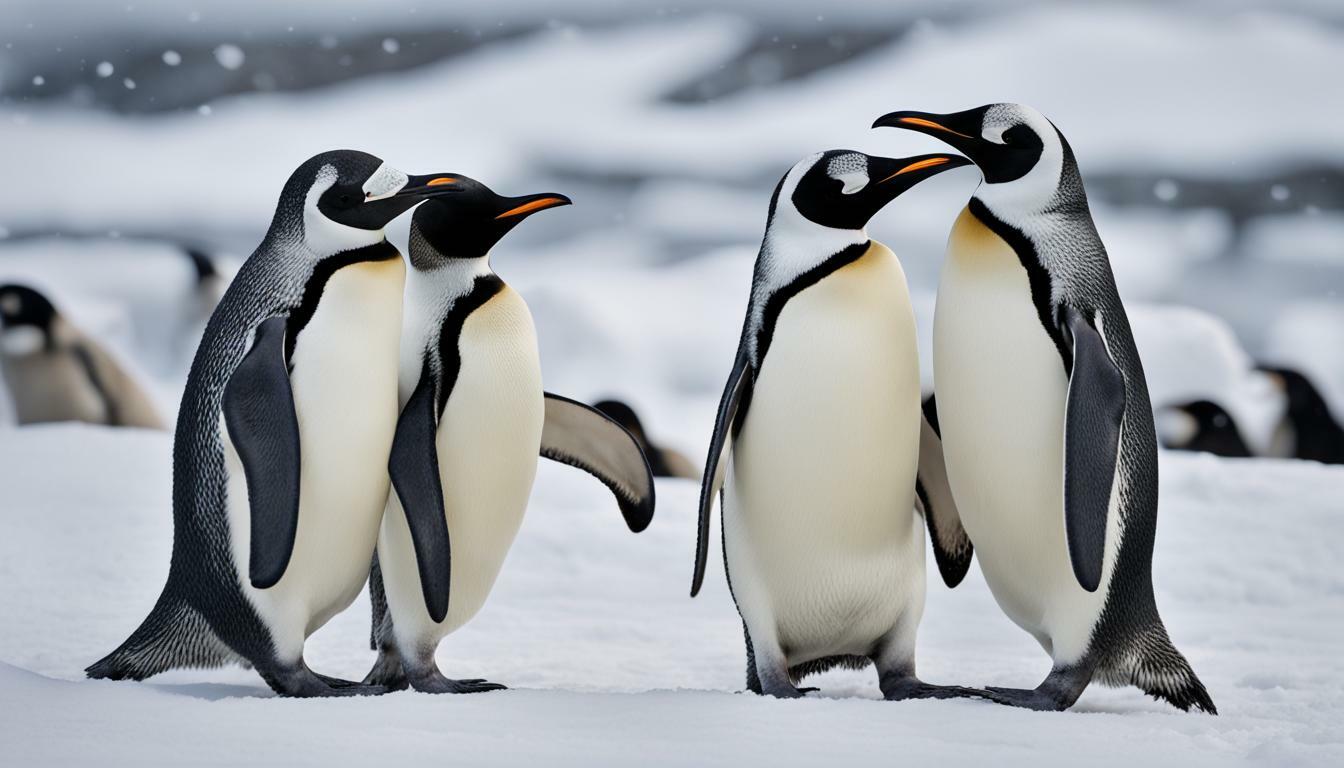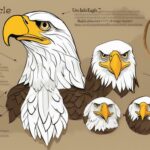When it comes to animal behavior, penguins have always fascinated scientists and researchers. With their distinct waddling gait and cute appearances, penguins have become the subject of many studies, particularly in regard to their mating habits and social structures. One of the questions that frequently arises is whether penguins can exhibit gay behavior. Let’s explore the various behaviors of penguins and delve into the topic of non-heteronormative penguins, including same-sex penguin couples and homosexual penguins.
Key Takeaways:
- Penguins have unique behaviors and social structures that have been studied extensively.
- The existence of non-heteronormative penguins, including same-sex penguin couples and homosexual penguins, has been documented in scientific research.
- Misconceptions about penguin behavior often arise, but it’s important to understand and accept the diversity of behaviors in the animal kingdom.
Understanding Penguin Social Structures
Before delving into penguin courtship and mating habits, it is important to understand the social structures of penguins. Penguins live and breed in colonies, ranging from a few hundred individuals to tens of thousands of birds. These colonies allow penguins to establish social bonds and cooperative behaviors, such as huddling together to conserve heat during cold winter months.
Penguins display a variety of social behaviors, including vocalizations, preening, and physical displays such as head-bobbing and flapping of wings. These behaviors serve to identify individuals, establish territory, and initiate courtship.
During courtship, males may present females with pebbles as a form of gift-giving. If the female accepts the pebble, she may then proceed to build a nest with it. Males may also engage in physical displays, such as bowing and calling to attract a mate.
Social hierarchies also exist within penguin colonies, with dominant individuals often occupying the best breeding sites and receiving priority access to food. However, cooperative behaviors such as huddling and group hunting also occur, with individuals taking turns to lead and follow in order to conserve energy and maximize success.
In summary, penguin social structures involve a range of behaviors and hierarchies that facilitate cooperative behaviors and courtship rituals. Understanding these structures provides important context for studying penguin mating habits and behavior.
Penguin Mating Habits and Reproduction
When it comes to mating, penguins have a complex system that is heavily influenced by environmental factors. During breeding season, penguins engage in courtship behaviors such as calling, bowing, and preening. These behaviors serve to establish bonds between potential mates and can last for several weeks.
Once a bond has been formed, penguins will mate and lay eggs in a nest built from pebbles or vegetation. In many species, both parents take turns incubating the eggs and caring for the chicks once they hatch. This ensures that the young are well-cared for and have the best chance of survival.
Interestingly, some species of penguins will engage in extra-pair copulations, where individuals mate with others outside their established pair bond. While this behavior may seem unusual, it is actually quite common in many bird species and can increase genetic diversity within a population.
Same-Sex Penguin Couples: The Reality
Contrary to popular belief, same-sex penguin couples are a common occurrence in the animal kingdom. In fact, studies have shown that same-sex behavior has been observed in over 450 species of animals, including penguins.
Scientific observations have documented same-sex penguin couples in various species, including Emperor, Adélie, Chinstrap, and Gentoo penguins. These pairs exhibit behaviors similar to those of opposite-sex couples, such as courtship rituals, mutual grooming, and shared nest-building responsibilities.
In some cases, same-sex penguin couples have even been known to successfully hatch and raise chicks together. For example, two male penguins at a zoo in Germany adopted and raised an abandoned egg, taking turns incubating it and caring for their chick.
| Species | Location | Observation |
|---|---|---|
| Emperor | Antarctica | A male-male pair formed a bond and tried to steal eggs to hatch as their own. |
| Adélie | Antarctica | A female-female pair built a nest together and were observed engaging in mating behaviors. |
| Chinstrap | Antarctica | A male-male pair was observed sharing a nest and incubating an egg together. |
| Gentoo | Antarctica | A male-male pair was observed building a nest and raising a chick together. |
It’s important to note that same-sex behavior in penguins and other animals is not a result of human influence or societal factors. Rather, it is a natural occurrence that reflects the diversity of the animal kingdom.
By acknowledging and accepting the existence of non-heteronormative behaviors in penguins, we can better understand and appreciate the complexity of their social structures and relationships. Same-sex penguin couples and their contributions to the LGBTQ+ community in the animal kingdom deserve recognition and respect.
Debunking Misconceptions about Penguin Behavior
Non-heteronormative penguins, including same-sex penguin couples, have long been subject to misconceptions and stigmatization in popular culture. However, scientific research has shown that these behaviors are a natural occurrence among penguins and are not abnormal or contrary to nature.
One common misconception is that same-sex behavior in penguins is a result of being in captivity or a lack of available mates. However, studies have shown that same-sex behavior occurs in the wild and is not limited to captive environments. Additionally, same-sex pairs have been observed engaging in courtship rituals, building nests, and even raising chicks together.
Another misconception is that same-sex behavior is a sign of confusion or abnormality in penguin social structures. However, research has shown that same-sex pairs often form strong bonds and exhibit behaviors that are similar to those of heterosexual pairs. These bonds and partnerships are essential to penguin social structures and their overall well-being.
It is important to understand that non-heteronormative behaviors are not limited to penguins. Many other species, including primates, birds, and fish, have been observed exhibiting same-sex behavior. Accepting and respecting diversity within nature is crucial to promoting a more inclusive and compassionate society.
The Importance of Penguin Bonds and Relationships
Penguins form strong bonds and relationships, regardless of their gender composition. These bonds are vital to their social structures, survival, and overall well-being. In fact, penguins often mate for life and share parental duties, including incubating and raising their young. Such behavior demonstrates the deep connection and commitment between penguin partners.
While non-heteronormative penguin behavior may seem unusual to some, it is important to recognize and accept the diversity of behaviors in the animal kingdom. Same-sex penguin couples display many of the same behaviors as opposite-sex penguin couples, including courtship rituals, nest building, and raising chicks. These bonds are just as significant and valuable as those formed by opposite-sex couples.
Studies have shown that penguins in same-sex relationships are just as successful in breeding and raising offspring as opposite-sex pairs. In fact, some zoos and aquariums have even introduced same-sex penguins into their breeding programs with great success.
Thus, it is clear that penguin bonds and relationships are crucial to the well-being and survival of their colonies. By acknowledging and respecting non-heteronormative penguin behavior, we can promote a greater understanding and acceptance of diversity within nature.
Are Penguins Monogamous or Do They Exhibit Homosexual Behavior?
Are penguins monogamous? Yes, they are. Penguins are known for their strong monogamous relationships, often staying with the same mate for life. However, it is interesting to note that some penguin species do exhibit homosexual behavior, forming same-sex pairs for companionship and, at times, even raising chicks together. So, while penguins are predominantly monogamous, they do display a diverse range of social behaviors.







